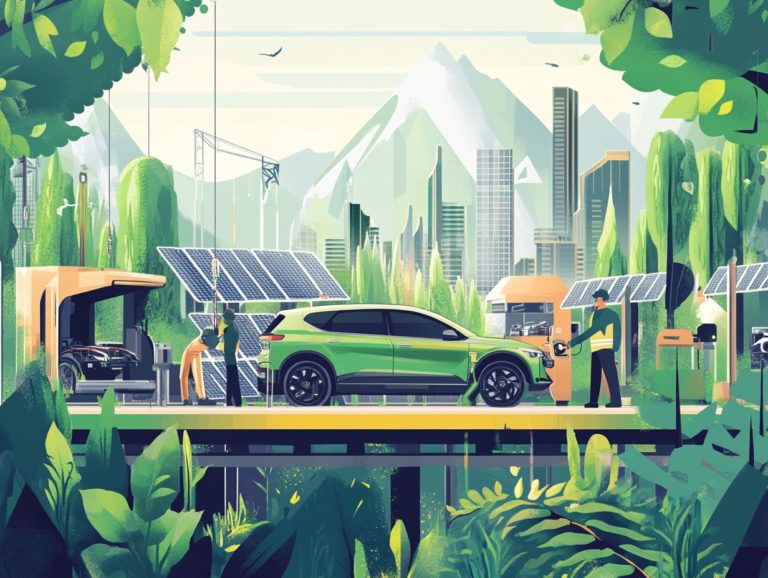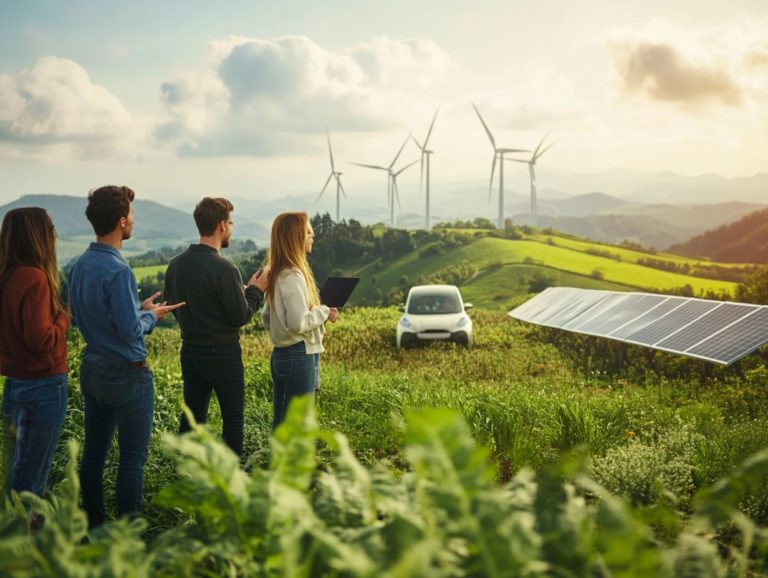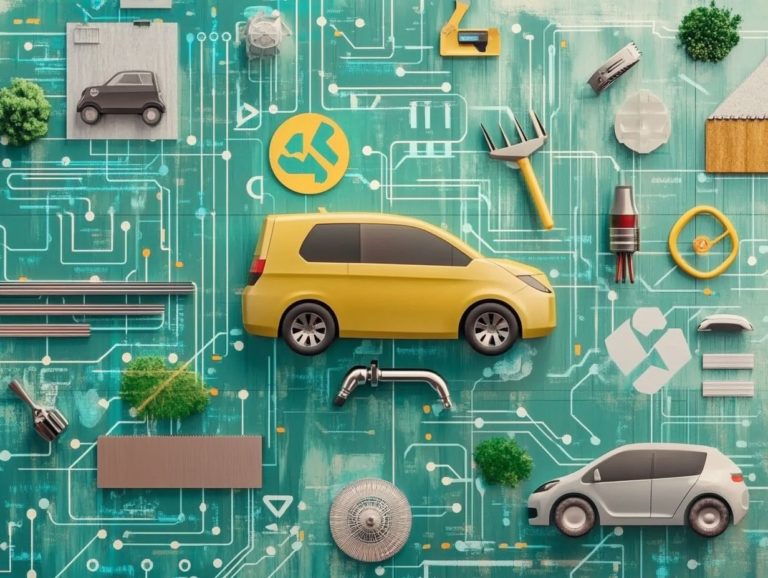The Role of Electric Vehicles in Sustainable Transportation
In an era where climate change and urban congestion are pressing concerns, sustainable transportation has become a vital solution for consideration.
Electric vehicles (EVs) play a crucial role in this transformative shift, presenting a cleaner, greener alternative to traditional gasoline-powered cars.
Let’s explore what sustainable transportation means and why it matters. This article highlights the numerous benefits of EVs, including their environmental and economic advantages, while addressing the challenges they encounter.
You ll find insights into current trends, government incentives, and the promising future of electric vehicles, encouraging you to reflect on their impact on our planet and your daily life.
Contents
- Key Takeaways:
- Understanding Sustainable Transportation
- Benefits of Electric Vehicles
- Challenges and Limitations of Electric Vehicles
- Current State of Electric Vehicles
- Government Incentives and Policies
- Future Outlook for Electric Vehicles
- Frequently Asked Questions
- What is the role of electric vehicles in sustainable transportation?
- How do electric vehicles contribute to sustainable transportation?
- What are the benefits of using electric vehicles for sustainable transportation?
- Are electric vehicles more expensive than traditional vehicles?
- How can electric vehicles help reduce greenhouse gas emissions?
- Are there any government incentives for purchasing electric vehicles?
Key Takeaways:
- Electric vehicles play a crucial role in sustainable transportation by reducing harmful emissions and promoting a greener future.
- They also offer economic advantages such as lower operating costs and potential job creation.
- Challenges like limited infrastructure and higher costs need to be addressed for wider adoption.
Understanding Sustainable Transportation
Understanding sustainable transportation means appreciating its role in reducing harm to the environment and promoting sustainability, with electric vehicles as a cornerstone of this effort.
As urban areas grapple with growing issues like air pollution and traffic congestion, integrating sustainable practices into the transportation sector is increasingly significant. Sustainable transportation bolsters public health by improving air quality and enriches urban livability, making it essential for future climate action.
This includes renewable energy sources and efficient charging infrastructure that seamlessly support electric mobility initiatives.
Defining Sustainable Transportation and Its Importance
Sustainable transportation refers to transport systems thoughtfully designed to reduce environmental impacts, especially concerning climate change and public health, by promoting options like electric vehicles.
This approach encompasses diverse modes, including cycling, public transit, and carpooling, all aimed at reducing dependence on fossil fuels and lowering greenhouse gas emissions. By investing in these systems, you can help your community reduce its carbon footprint and enhance air quality, leading to improved health outcomes.
Sustainable transportation elevates urban livability, fostering pedestrian-friendly spaces, encouraging active lifestyles, and alleviating traffic congestion. These initiatives are crucial in shaping resilient cities that prioritize the well-being of their inhabitants while effectively addressing pressing environmental challenges.
Benefits of Electric Vehicles
Electric vehicles (EVs) offer substantial advantages across environmental, economic, and public health dimensions, and understanding the role of governments in promoting EV sustainability is crucial for fostering a more sustainable transportation future.
Environmental Impact
The environmental impact of electric vehicles is profound, significantly contributing to the reduction of greenhouse gas emissions and air pollution levels, especially in urban settings.
By opting for electric alternatives over traditional combustion engines, you improve air quality and shrink the carbon footprint linked to transportation. When these vehicles are powered by renewable energy sources like solar, wind, or hydroelectric power, the positive effects multiply, establishing a cleaner, more sustainable energy cycle.
This transition diminishes reliance on fossil fuels and enhances energy independence. As communities invest in electric vehicle infrastructure, the cumulative benefits become evident: a significant reduction in harmful pollutants, fostering healthier living conditions and supporting the global effort to combat climate change.
Economic Benefits
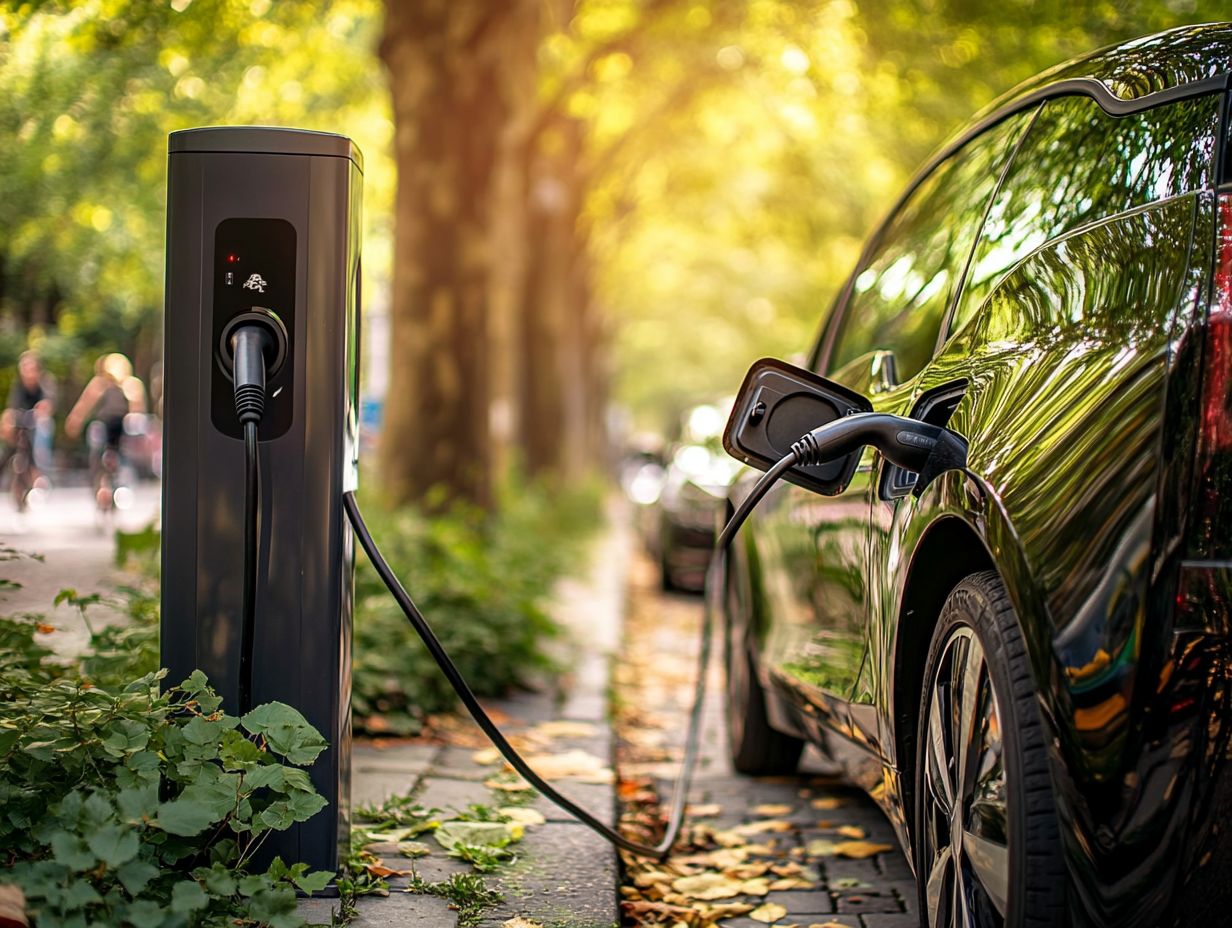
Electric vehicles present significant economic advantages that go beyond personal savings. They impact the automotive industry and contribute to job creation in the green technology sector.
As consumer demand grows, manufacturers are increasing their investments in electric vehicle production. This creates a wealth of job opportunities in fields like engineering and manufacturing. This transition supercharges local economies and opens up exciting new job opportunities!
Moreover, the shift toward electric mobility reduces reliance on fossil fuels, promoting a cleaner environment and enhancing energy sustainability. The collective benefits highlight the importance of adopting electric vehicles in today s economy.
Challenges and Limitations of Electric Vehicles
Even with numerous advantages, electric vehicles face significant challenges and limitations that can hinder their widespread use.
Key among these are the infrastructure requirements and cost barriers potential users must navigate.
Infrastructure and Range Limitations
One primary challenge is the existing charging infrastructure, which often lacks the extensive network needed for widespread EV use. Additionally, there are limitations in vehicle range.
Rural areas often lack charging stations, leading to concerns about “range anxiety,” or the fear of running out of charge while driving an electric vehicle. Although advancements in battery technology are improving EV battery efficiency and capacity, infrastructure development is lagging.
As manufacturers strive for longer ranges, consider how geographic disparities in charging access might affect your purchasing decisions. For many potential buyers, the absence of reliable charging options near home or along daily commutes creates a significant barrier to embracing electric vehicles.
Cost and Accessibility Issues
Cost and accessibility issues pose substantial barriers to adopting electric vehicles, especially if you’re used to fossil fuels and traditional automotive options.
The relatively high upfront costs of electric vehicles may make you hesitate, especially if you’re seeking budget-friendly alternatives. Financing options for electric vehicles are often more limited or less favorable than those for conventional cars, adding complexity to your decision-making process.
The current selection of electric models can feel restrictive, leaving you wondering if you’ll find a suitable option that meets your needs and preferences. These factors can significantly influence your choices, making it harder for electric vehicles to penetrate markets traditionally dominated by gasoline-powered cars.
Current State of Electric Vehicles
The current landscape of electric vehicles showcases a notable rise in market trends and adoption rates. This signals a significant shift in consumer preferences toward more sustainable transportation solutions.
This evolution reflects a demand for innovation and a commitment to a greener future.
Explore electric vehicle options today and join the movement towards a sustainable future!
Market Trends and Adoption Rates
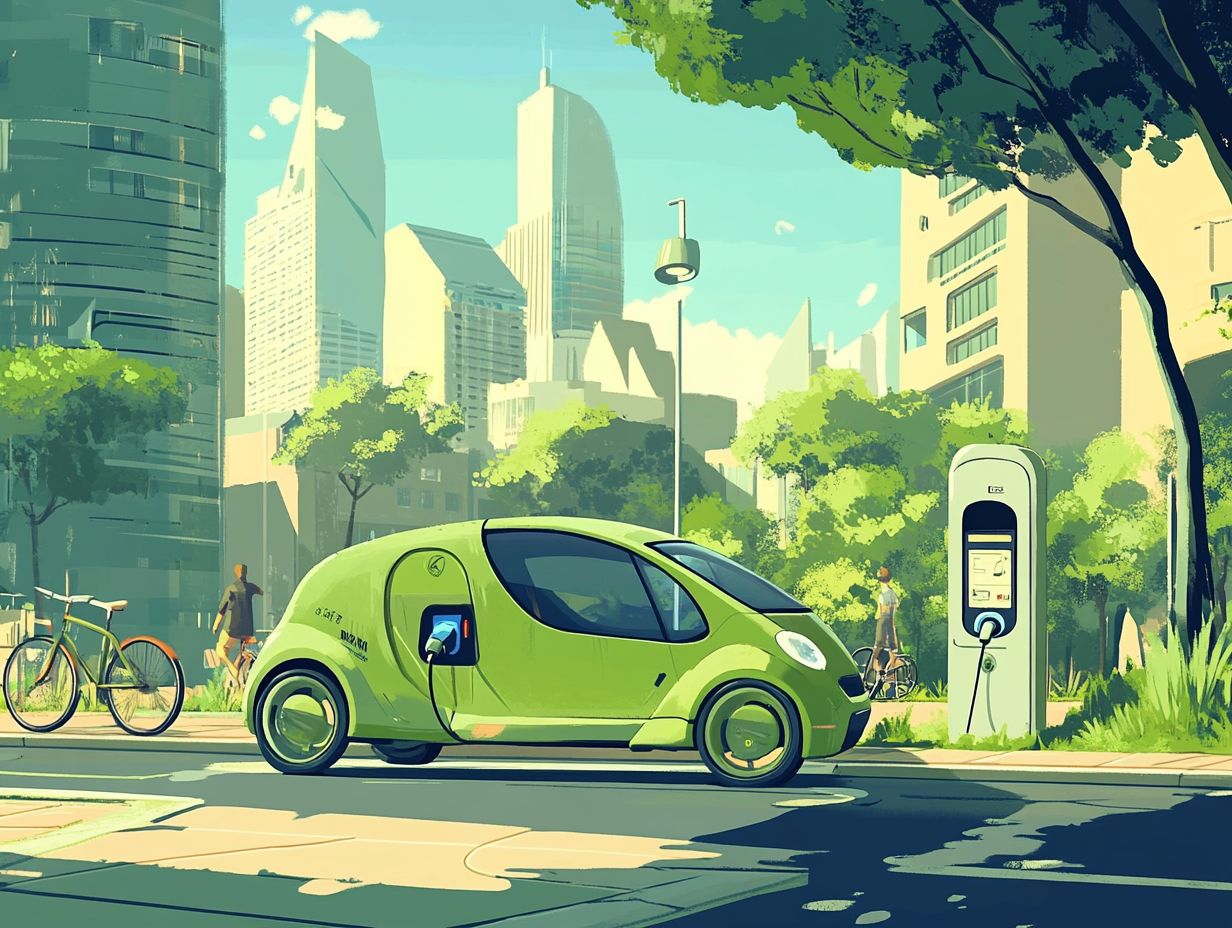
Recent market trends indicate a significant rise in electric vehicle adoption. This showcases the automotive industry’s response to the growing demand for sustainable transportation solutions.
Reports reveal that EV sales have surged by over 70% in the past year alone. Popular models like the Tesla Model 3 and Ford Mustang Mach-E have become consumer favorites.
Analysts forecast that electric cars could represent 30% of total vehicle sales by 2030. This shift illustrates a transformation in preferences and highlights investments made by major automakers like General Motors and Volkswagen.
These companies are ramping up production capabilities to meet growing interest, underscoring the automotive industry’s commitment to a greener future.
Government Incentives and Policies
Government incentives and policies play a pivotal role in shaping the future of electric vehicles. They promote development and encourage consumer adoption by providing financial support and establishing regulatory frameworks.
Support for Electric Vehicle Development and Usage
Government support for electric vehicle development includes financial incentives, research funding, and public awareness campaigns. These initiatives help reduce reliance on fossil fuels and cultivate a sustainable transportation ecosystem.
Programs such as tax credits for EV purchases and grants for infrastructure expansion have significantly lowered barriers, making electric vehicles more accessible than ever.
Government-funded research has driven advancements in battery technology and charging solutions. The steady rise in EV adoption rates reflects growing awareness of financial savings and environmental benefits of switching to electric alternatives.
Future Outlook for Electric Vehicles
The future of electric vehicles looks incredibly promising! Anticipated growth and technological advancements are set to revolutionize the automotive landscape.
This transformation enhances the industry and aligns with global climate action initiatives, enabling individuals to be part of a more sustainable future.
Predicted Growth and Advancements in Technology
Predicted growth for electric vehicles hinges on new technologies that improve vehicles. These advancements promise to enhance battery efficiency and overall energy performance.
As automakers embrace innovations, the emergence of solid-state batteries is expected to extend driving ranges and reduce recharge times. These batteries use a solid electrolyte instead of liquid, contributing to enhanced performance.
Breakthroughs in energy recovery mechanisms are anticipated to improve overall efficiency. Collectively, these technological strides will redefine your driving experience and establish a strong foundation for the future of electric mobility.
Frequently Asked Questions
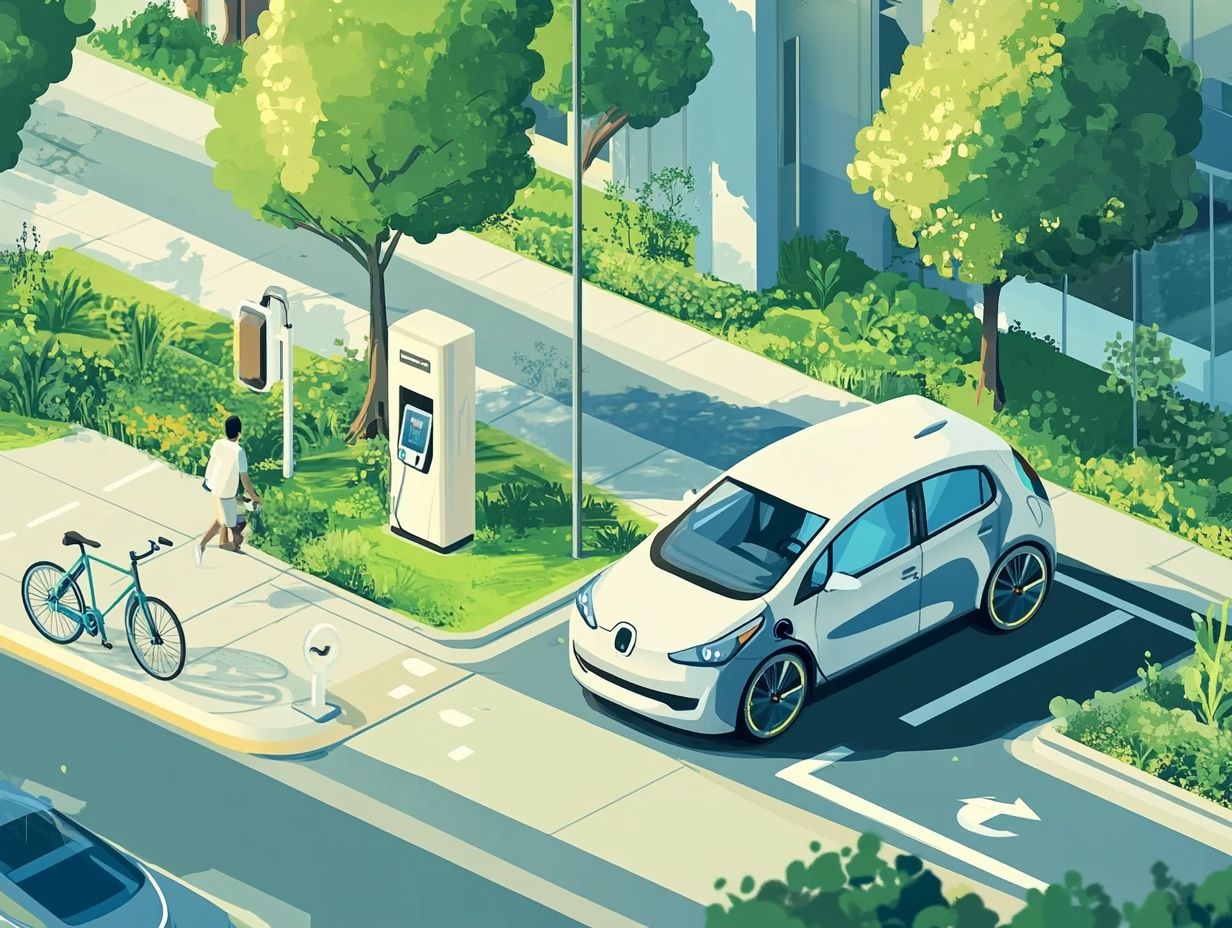
What is the role of electric vehicles in sustainable transportation?
The role of electric vehicles in sustainable transportation is to reduce reliance on fossil fuels and decrease emissions that contribute to climate change, as highlighted in the role of public transportation in EV sustainability.
How do electric vehicles contribute to sustainable transportation?
Electric vehicles use electricity as their primary energy source, which can be generated from renewable sources like wind or solar power.
What are the benefits of using electric vehicles for sustainable transportation?
Electric vehicles help reduce air pollution. They also decrease our reliance on oil and promote energy independence.
Are electric vehicles more expensive than traditional vehicles?
Electric vehicles may cost more upfront. However, they save money over time due to lower maintenance and fuel costs.
How can electric vehicles help reduce greenhouse gas emissions?
Electric vehicles do not emit harmful gases like traditional cars. This makes them vital in reducing overall greenhouse gas emissions and fighting climate change.
Are there any government incentives for purchasing electric vehicles?
Many governments provide tax credits or rebates. These incentives make electric vehicles more affordable and appealing for sustainable transportation.


